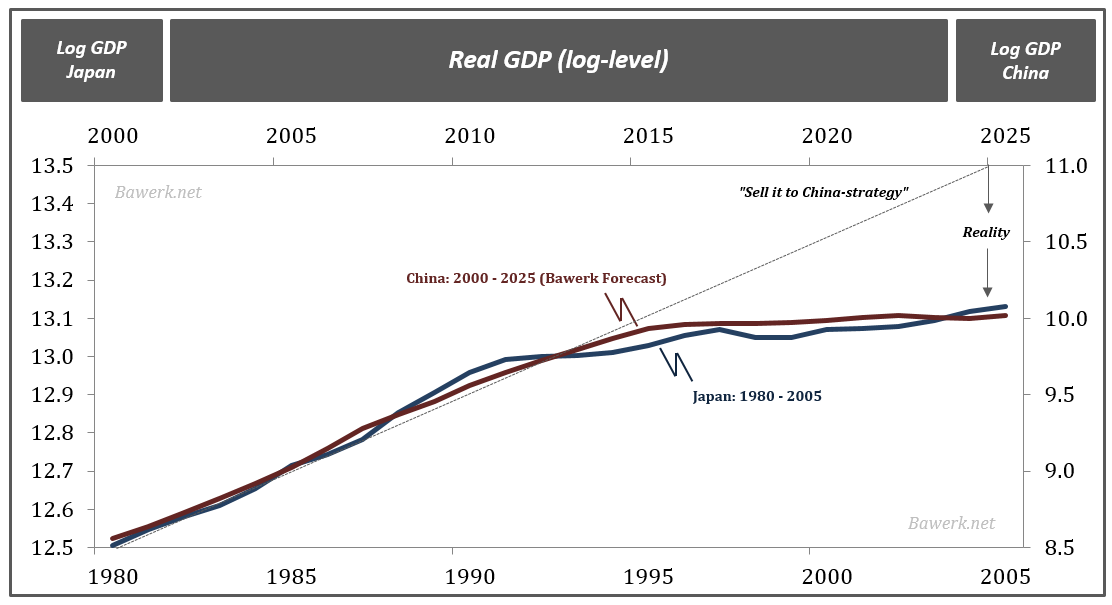The view that more money can revive an economy is based on the belief that money transmits its stimulatory effect through aggregate expenditure. With more money in their pockets, people will be able to spend more and the rest will follow suit. Money then, as one can see in this way of thinking, is a means of payments and a means of funding.
Money, however, is not a means of payments but the medium of exchange. It only enables one producer to exchange his produce with another producer. The means of payments are always real goods and services, which pay for other goods and services. All that money does is to facilitate these payments – it makes the payments for goods and services possible.
For instance, a baker exchanges his bread for money and then uses the money to buy shoes. He pays for shoes not with money but with the bread, he produced. Money just allows him to make this payment. Also, note that the baker’s production of bread gives rise to his demand for money.
When we talk about demand for money, what we really mean here is the demand for money’s purchasing power. After all, people do not want a greater amount of money in their pockets but rather they want greater purchasing power in their possession.
On this Mises wrote,
The services money renders are conditioned by the height of its purchasing power. Nobody wants to have in his cash holding a definite number of pieces of money or a definite weight of money; he wants to keep a cash holding of a definite amount of purchasing power. [1]
In a free market, in similarity to other goods, the price of money is determined by supply and demand. If there is less money, its exchange value will increase. Conversely, the exchange value will fall when there is more money. Within the framework of a free market, there cannot be such thing as “too little” or “too much” money. As long as the market is allowed to clear, no shortage of money can emerge.
Once the market has chosen a particular commodity as money, the given stock of this commodity will always be sufficient to secure the services that money provides. Hence, in a free market, the whole idea of the optimum growth rate of money is absurd. According to Mises:
As the operation of the market tends to determine the final state of money’s purchasing power at a height at which the supply of and the demand for money coincide, there can never be an excess or deficiency of money. Each individual and all individuals together always enjoy fully the advantages which they can derive from indirect exchange and the use of money, no matter whether the total quantity of money is great, or small. . . . the services which money renders can be neither improved nor repaired by changing the supply of money. . . . The quantity of money available in the whole economy is always sufficient to secure for everybody all that money does and can do.[2]
In a market economy, the purpose of production is consumption. People produce and exchange goods and services with each other in order to promote their life and wellbeing – their ultimate purpose. This means that consumption cannot arise without production whilst production without consumption will be a meaningless venture. Hence, in a free market economy both consumption and production are in harmony with each other. In a free market economy, consumption is fully backed up by production.
What permits the baker to consume bread and shoes is his production of bread. A portion of his bread production is allocated to his direct consumption while the other portion is used to pay for shoes. Note that his consumption is fully backed up i.e. paid by his production. Any attempt then to elevate consumption without the corresponding production leads to unbacked consumption, which must come at somebody else’s expense.
This is precisely what monetary pumping does. It generates demand, which is not supported by any production. Once exercised, this type of demand undermines the flow of real savings and in turn weakens the formation of real capital and stifles rather than boosts economic growth.
It is real savings and not money that funds and makes possible the production of better tools and machinery. With better tools and machinery, it is then possible to lift the production of final goods and services – this is what economic growth is all about.
Contrary to the popular way of thinking, setting in motion an unbacked-by-production consumption by means of monetary pumping will only stifle and not promote economic growth. This is because unbacked consumption will weaken the flow of real savings and thus weaken the source that funds real economic growth. If it had been otherwise then poverty in the world would have been eliminated a long time ago. After all everybody knows how to demand and to consume.
The only reason why loose monetary policies may appear to grow the economy is because the pace of real savings generation is strong enough to absorb the increases in unbacked consumption.
Once, however, the pace of unbacked consumption reaches a stage where the flow of real savings disappears all together the economy falls into an economic slump. Any attempt by the central bank to pull the economy out of the slump by means of more monetary pumping makes things much worse for it only further strengthens unbacked or non-productive consumption, thereby destroying whatever is left of real savings.
The collapse in the sources of real economic growth exposes commercial banks’ fractional reserve lending and raises the risk of a run on banks. To protect themselves banks curtail their creation of credit out of “thin air”. Under these conditions, further monetary pumping cannot lift banks’ lending. On the contrary, more pumping destroys more real savings and destroys more businesses, which in turn makes banks reluctant to expand lending.
Within these conditions, banks would likely agree to lend only to creditworthy businesses. However, as an economic slump deepens it becomes much harder to find many creditworthy businesses. Furthermore, because of loose monetary policy, the lower interest environment against the background of growing risk further diminishes banks’ willingness to expand credit. All this puts downward pressure on the stock of money.
Hence, the central bank may find that despite its attempt to inflate the economy, money supply will start falling. Obviously, the central bank could offset this fall by aggressive monetary pumping. The central bank could also monetize the government budget deficit – it could mail checks to every citizen. All this, however, will only further undermine real savings and devastate the real economy.
[1] Ludwig von Mises, Human Action, 3rd revised edition (Contemporary Books 1966) p 421.
[2] Ibid.




Rubbish.
Where do you get this?
Look, Banks use their banking licence to create money out of nowhere and so increase the money supply.
But then they misuse this power and create too much, panic because some of their loans default and so stop lending and so create more defaults.
And then they oversteer and Minskey Moment and….
CRASH
If the banks had kept on lending at s reasonable rate then no crash.
Germany had no real 2008 GFC because they had so many Sparkhassen banks which kept lending or increased.
Hence kept up the money supply.
And hence demand
Result – no Crash.
Jim Murray
The flaw in the above article lies in the phrase “As long as the market is allowed to clear…”.
As Keynes rightly pointed out, markets JUST DON’T CLEAR.!!!! Or to be more accurate, in a free market, and given a recession, prices would fall, which in turn would mean a rise in the real value of the stock of money, which in turn would induce more spending.
But as Keynes rightly said, “wages are sticky downwards”. To put it bluntly, it’s plain impossible in some heavily unionised sectors to cut nominal wages.